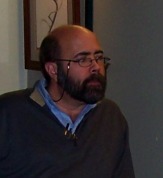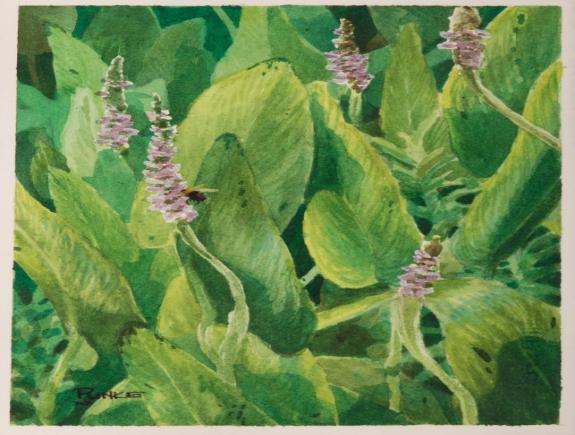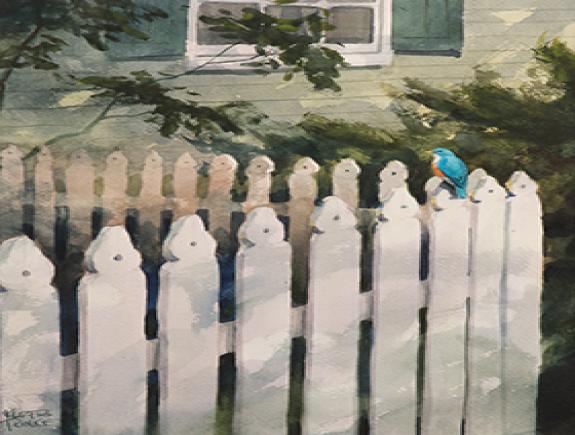
Kurt Plinke has been observing and depicting nature for over fourty years. First studying watercolors in Ohio with Leland McClellan, Kurt has been a student of water-based mediums ever since. In College, Kurt considered becoming a biologist, and studied both art and biology at Wilmington College and Bowling Green State University. Later, Kurt studied egg temperas and painting at Towson University.
Chance landed Kurt and his family in Maryland, where he was taken with the diversity of life along the Chesapeake Bay and it's Eastern Shore. Since moving to the shore, Kurt has spent years studying and observing the myriad of intertwined ecosystems there, depicting what he sees in his detailed watercolors. He often becomes fascinated by the overlooked; those little creatures hiding underfoot or overhead. Many of his watercolors reflect this, paintings of insects, amphibians, and moss-covered rocks. Other paintings look at natural patterns and rhythms. Kurt loves to identify patterns in nature, be it as simple as the veins of a leaf or as complex as the repetition of migration and movement. These paintings may be some of his favorites, as they at first appear simple, then gain in complexity as they are considered more deeply.
Other paintings by Kurt Plinke are abstractions, making sometimes subtle and sometimes blatant statements about the interconnections between man and nature. Societal life forms such as bees, ants and some birds populate these images, often out of scale and context. These all explore how man may suffer the same fate as these small societies. Some of these more abstract images look at the historical connections some species have with people. Crows, Toads and social insects such as Honey Bees are among his favorites in these paintings.
Plinke's landscapes are mainly painted en plein aire, on location. Some are painted in a matter of moments, a gestural impression or interpretation of a fleeting scene. Others take a little more time, focusing on texture, pattern and value.
In all of his work, Kurt Plinke is a patient observer and recorder, intertwining his views and thoughts as he recreates images as he sees them. While you examine his work, look for the messages hidden among the detailed imagery. Some are obvious, some are well-hidden.


 MY ACCOUNT
MY ACCOUNT CART
CART DONATE
DONATE JOIN THE LIST
JOIN THE LIST
 Greensboro, MD
Greensboro, MD

